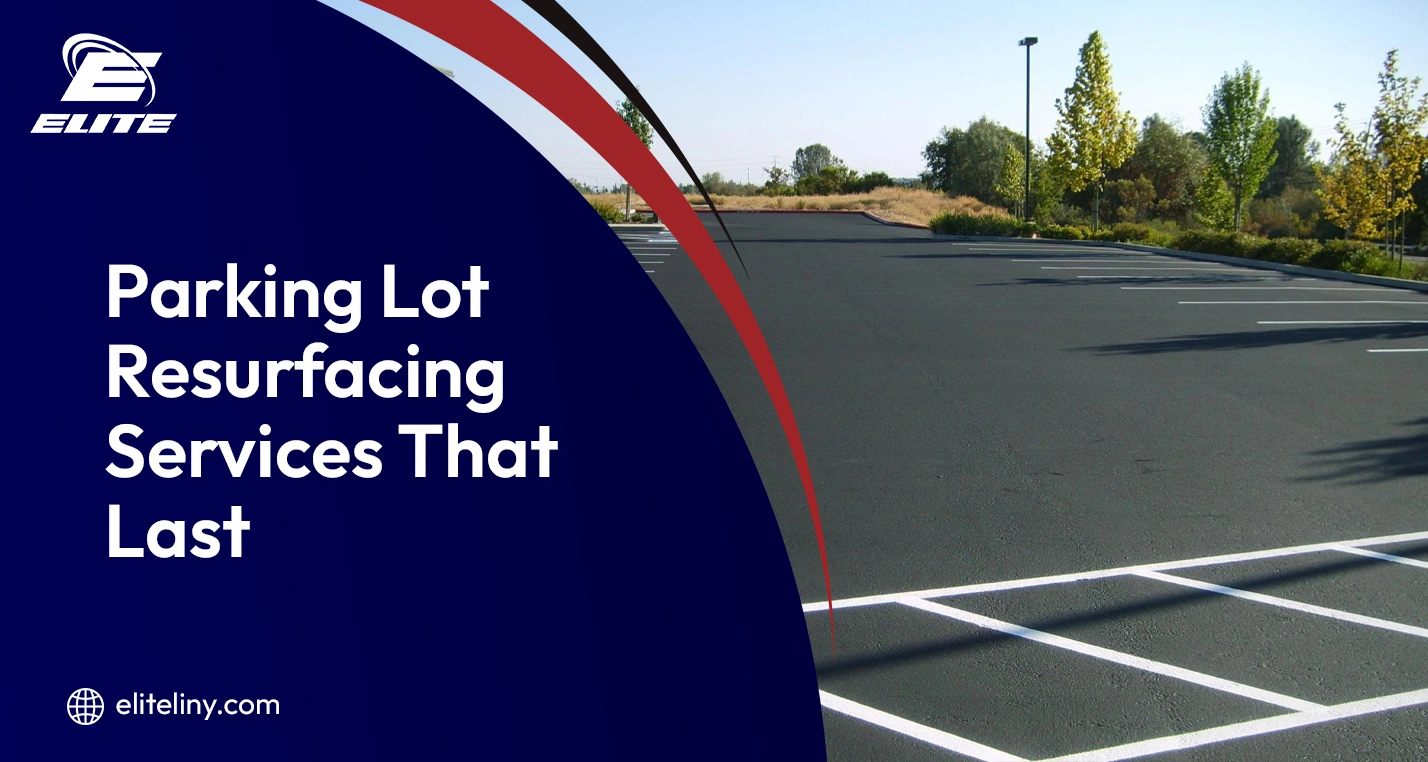A worn or damaged parking lot sends the wrong message to visitors and creates safety risks. Over time, traffic, weather, and age cause cracks, potholes, and faded surfaces. To restore strength and appearance without full replacement, property owners turn to resurfacing services that last.
These resurfacing services include inspections, cleaning, milling, repairs, overlays, compaction, curing, line striping, drainage adjustments, and final inspections. Together, they improve safety, extend pavement life, and enhance curb appeal. By understanding each stage, property owners can make informed choices that protect their investment.
Parking Lot Resurfacing Services That Ensure Long-Term Results
Let’s examine the professional resurfacing services that transform aging lots into safe, reliable, and attractive spaces.
1. Surface Inspections and Assessments
Every successful resurfacing project begins with a professional evaluation. Contractors inspect the pavement for cracks, potholes, drainage, and structural concerns. This service determines whether resurfacing is the right option or if a full reconstruction is necessary. By identifying issues early, surface assessments ensure the right approach and help maximize the value of the resurfacing investment.
2. Surface Cleaning Services
Before any overlay is applied, the lot must be cleaned thoroughly. Cleaning services remove dirt, debris, oil, and vegetation that can interfere with adhesion. Contractors often use high-powered sweepers or pressure washing equipment to prepare the surface. Clean pavement ensures the new asphalt layer bonds properly, preventing weak points and promoting long-term durability.
3. Milling and Leveling Solutions
Milling services remove the top layer of existing asphalt to create an even base for resurfacing. This step removes irregularities and ensures smooth transitions around curbs, sidewalks, and drainage areas. Leveling corrects uneven surfaces that could lead to pooling water. By restoring a uniform foundation, milling and leveling help the new asphalt layer perform effectively.
4. Crack Filling and Pothole Repair
Resurfacing includes targeted repairs to stabilize the lot before new asphalt is applied. Crack filling prevents water from seeping into the sublayers, while pothole repair eliminates structural weaknesses. These services address existing damage so it does not continue to spread under the overlay. Proper repairs ensure the resurfaced lot remains safe, stable, and long-lasting.
5. Asphalt Overlay Services
The central resurfacing service is the asphalt overlay. A new layer of hot-mix asphalt is applied across the prepared lot, typically one to several inches thick depending on traffic needs. This overlay restores strength, smooths imperfections, and improves appearance. Professional overlay services extend pavement life by many years while offering a cost-effective alternative to full replacement.
6. Compaction and Surface Finishing
After asphalt is laid, compaction services ensure dense and smooth material. Heavy rollers remove air pockets and create a strong bond between the old surface and the new layer. This service is essential to preventing premature wear, rutting, or uneven settlement. Proper finishing ensures the lot can handle heavy use while maintaining a clean, polished look.
7. Curing and Lot Readiness Services
Freshly resurfaced lots require time to cure before they can safely handle traffic. Professional curing services monitor temperature and conditions to determine when the lot is ready. This prevents damage caused by early use and ensures maximum strength. By allowing the asphalt to set properly, curing services protect the investment and extend the pavement’s lifespan.
8. Line Striping and Pavement Markings
Resurfacing is not complete until new striping and markings are applied. Line striping services define parking spaces, direct traffic flow, and ensure compliance with ADA standards. Fresh paint improves visibility, reduces accidents, and enhances curb appeal. Clear, professional markings give the property a well-organized appearance that benefits safety and presentation.
9. Drainage Repair and Adjustments
Proper water management is critical for pavement longevity. Resurfacing services often include adjusting slopes, repairing catch basins, or installing drainage solutions to prevent standing water. These services protect against erosion, cracking, and premature deterioration by keeping water away from the lot surface. Effective drainage extends the life of the resurfaced lot and safeguards the surrounding property.
10. Quality Control and Final Inspections
The final resurfacing service is a comprehensive inspection. Contractors review the lot for smoothness, compaction, striping accuracy, and drainage performance. Quality control ensures the project meets safety, regulatory, and performance standards. This final step confirms the lot is ready for daily use and built to last, giving property owners peace of mind.
Conclusion
Parking lot resurfacing is not a single task but a coordinated set of services that restore and protect pavement for years to come. It begins with inspections, cleaning, and milling, followed by repairs, overlays, and compaction for strength. Curing ensures durability, while line striping organizes spaces, and drainage adjustments safeguard against water damage.
Final inspections confirm quality and long-term performance. These resurfacing services offer businesses safer, stronger, and more attractive lots. You can trust Elite Parking Area Maintenance for a full range of professional resurfacing services to ensure parking lots remain functional, compliant, and visually appealing well into the future.

